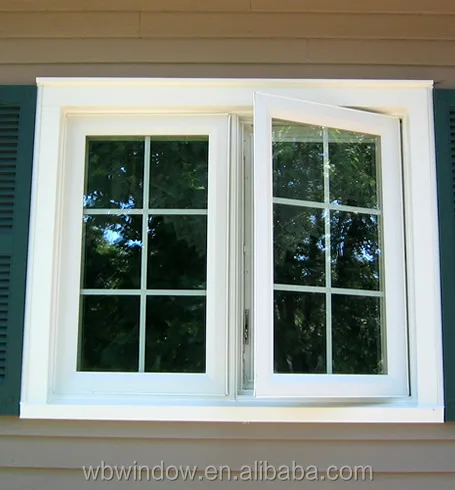
U VALUE VINYL DOUBLEPANE WINDOW WINDOWS
There is a better alternative for higher insulation performance: special plastic spacers, generally referred to as 'warm-edge spacers'.ĭouble and triple-glazed windows also have argon, krypton, or other inert gases between their panes. Many of these spacers are made from aluminum, which is a very conductive material. Most modern windows use glazing spacers to keep the distance between their panes for sealing purposes. Insulbar LO, a product introduced by Ensinger, is a lambda (thermal conductivity) optimized solution for thermal insulation profiles. If the system is thermally separated with an insulating profile with a width of 42 mm, the thermal transmission coefficient can be reduced to 1.3 W/m2K. The material used for this insulating bar stands out for its low thermal conductivity value (0.30 W/m2K) and its good mechanical properties even at higher temperatures.Ī non-thermally-separated frame from an aluminum window has a thermal transmission coefficient of 6.8 W/m2K. The proportion of glass fibre in the profiles is 25%. These profiles are called thermal breaks and are made from glass fibre reinforced polyamide 6,6. To reduce heat flow and the U-factor, metal frames should have an insulating plastic profile placed between the inside and outside of the frame and sash. Some thermal barriers (like Insulbar LEF) decrease thermal losses due to radiation through a low-e folio applied to the thermal insulation profile. Modern double, triple and quadruple-glazed windows have thin, metallic low-e coatings on the panes, which can significantly improve their thermal insulating performance.Īnother area where low-e coatings are used is thermal barriers. The insulation provided by double or triple glazing can be further improved by selecting windows with low-e coatings, thermal breaks and argon or other similar gas between the panes, and also by selecting windows with high energy-efficient frames. Single glass windows are no longer in general use.

1.7 High insulation-performance windows.Most governments in several countries offer tax breaks or rebate to promote installation of energy savings systems (windows, boilers, insulation, etc.) To convert from SI to US customary values, divide by 5.678. Within this article, U-values are expressed in SI unless otherwise noted. In the United States, U-value is expressed as British thermal units (Btu) per hour-square feet-degrees Fahrenheit: In most countries, U-value is expressed in SI units, as watts per square metre- kelvin: The U-factor of a window can often be found on the rating label of the window.Īlthough the concept of U-value (or U-factor) is universal, U-values can be expressed in different units. The U-value is used to refer to the amount of heat that can pass through a window, called thermal transmittance, with a lower score being better. Window insulation reduces heat transfer from one side of a window to the other. JSTOR ( January 2018) ( Learn how and when to remove this template message).

Unsourced material may be challenged and removed.įind sources: "Window insulation" – news

Please help improve this article by adding citations to reliable sources. This article needs additional citations for verification.


 0 kommentar(er)
0 kommentar(er)
